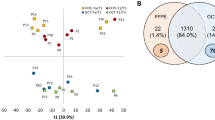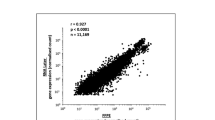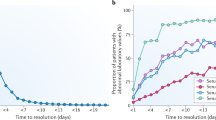Abstract
Appreciation of the different methods of tissue handling is a prerequisite to obtaining accurate and biologically relevant tissue-based information. When a tissue sample is removed from its environment, biological changes are induced within its constituent cell population. It is inevitable that artefacts will be induced through obtaining and processing tissues, irrespective of whether the samples comprise a few cells derived by fine-needle aspiration or larger specimens obtained surgically. Depending upon the level of sophistication of the analytical methods subsequently employed, such changes might be irrelevant, or might result in acquisition of spurious data. While even brief ischemia alters expression of some genes, detectable by appropriate molecular techniques, the same changes might make no appreciable difference to tissue histomorphology. Furthermore, the phenotype of viable cells is known to change during tissue collection and handling. For example, transitional epithelial cells voided in urine are not phenotypically identical to those retained within the urothelium. Such phenotypic changes are temporary and might be of little consequence to subsequent analyses. Surprisingly, many cells in tissues preserved in an ischemic state can remain viable for several hours, and are believed to remain genotypically stable in the short term.
Key Points
-
Appropriate fixation techniques, employed soon after tissue sampling, are essential for the preservation of tissues
-
Specific chemical modifications occur in tissues during fixation and can interfere with subsequent analytical techniques, unless properly understood
-
All tissue fixation methods induce artefacts in preserved tissues, which can be physical (morphological) or chemical
-
Understanding the basis of the induced artefacts allows their presence to be compensated for, or even reversed, during subsequent analyses
-
Collection, preservation and storage of all human biological material are governed by law and it is imperative that appropriate consent and ethical approval are obtained before any study employing such material is undertaken
This is a preview of subscription content, access via your institution
Access options
Subscribe to this journal
Receive 12 print issues and online access
$209.00 per year
only $17.42 per issue
Buy this article
- Purchase on Springer Link
- Instant access to full article PDF
Prices may be subject to local taxes which are calculated during checkout



Similar content being viewed by others
References
Drury RAB and Wallington EA (1980) Preparation and fixation of tissues. In Carleton's histological technique, 36–56 (Eds Drury RAB and Wallington, EA) Oxford: Oxford University Press
Werner M et al. (2000) Effect of formalin tissue fixation and processing on immunohistochemistry. Am J Surg Path 24: 1016–1019
Foss RD et al. (1994) Effects of fixative and fixation time on the extraction and polymerase chain reaction amplification of RNA from paraffin-embedded tissue. Comparison of two housekeeping gene mRNA controls. Diagn Mol Pathol 3: 148–155
Kingsbury AE et al. (1995) Tissue pH as an indicator of mRNA preservation in human post-mortem brain. Mol Brain Res 28: 311–318
Labat-Moleur F et al. (1998) TUNEL apoptotic cell detection in tissue sections: critical evaluation and improvement. J Histochem Cytochem 46: 327–334
Baker JR (1966) Cytological technique: the principles underlying routine methods. London: Chapman and Hall
Kohler G and Milstein C (1975) Continuous culture of fused cells secreting antibody of predefined specificity. Nature 256: 495–497
Foster CS (1982) Lymphocyte hybridomas. Cancer Treat Rev 9: 59–84
Pearse AGE (1980) Histochemstry, theoretical and applied. Edinburgh: Churchill Livingstone
Woods AE and Ellis RC (1996) Laboratory histopathology: a complete reference (2 vols) New York: Churchill Livingstone
Sato Y et al. (1986) The AMeX method. A simplified technique of tissue processing and paraffin embedding with improved preservation of antigens for immunostaining. Am J Path 125: 431–435
Lewis F et al. (2001) Unlocking the archive gene expression in paraffin-embedded tissue. J Path 195: 66–71
Gillespie JW et al. (2002) Evaluation of non-formalin tissue fixation for molecular profiling studies. Am J Path 160: 449–457
Vincek V et al. (2003) A tissue fixative that protects macromolecules (DNA, RNA and protein) and histomorphology in clinical samples. Lab Invest 83: 1427–1435
Start RD et al. (1992) Reassessment of the rate of fixative diffusion. J Clin Path 45: 1120–1121
McGhee JD and von Hippel PH (1977) Formaldehyde as a probe of DNA structure. 3. Equilibrium denaturation of DNA and synthetic polynucleotides. Biochemistry 16: 3267–3276
Williams C et al. (1999) A high frequency of sequence alterations is due to formalin fixation of archival specimens. Am J Path 155: 1467–1471
McGhee JD and von Hippel PH (1977) Formaldehyde as a probe of DNA structure. Mechanism of the inital reaction of formaldehyde with DNA. Biochemistry 16: 3276–3293
Masuda N et al. (1999) Analysis of chemical modification of RNA from formalin-fixed samples and optimization of molecular biology application for such samples. Nucleic Acids Res 27: 4436–4443
Leong ASY et al. (1996) Handbook of surgical pathology. New York: Churchill Livingstone
Bancroft JD and Stevens A (1996) Theory and practice of histological techniques, edn 4. Edinburgh: Churchill Livingstone
Noguchi M et al. (1997) Modified formalin and methanol fixation methods for molecular biological and morphological analyses. Pathology Int 47: 685–691
Giannella C et al. (1997) Comparison of formalin, ethanol and Histochoice fixation on the PCR amplification from paraffin-embedded breast cancer tissue. Eur J Clin Chem Clin Biochem 35: 633–635
Mayers CP (1970) Histological fixation by microwave heating. J Clin Path 23: 273–275
Login GR et al. (1998) Calibration and standardization of microwave ovens for fixation of brain and peripheral nerve tissue. Methods 15: 107–117
Burton JL and Wells M (2001) The Alder Hey affair: implications for pathology practice. J Clin Path 54: 820–823
Chief Medical Officer (2001) Report of a Census of Organs and Tisues Retained by Pathology Services in England conducted in 2000 by the Chief Medical Officer. London: The Stationary Office [http://www.dh.gov.uk/assetRoot/04/06/50/88/04065088.pdf] (Accessed 30 March 2006)
Elam G (2001) Consent to organ and tissue retention at post-mortem examination and disposal of human material. London: The Stationary Office [http://www.dh.gov.uk/assetRoot/04/08/23/88/04082388.pdf] (Accessed 30 March 2006)
The Royal Liverpool Children's Inquiry (2001) The Report of the Royal Liverpool Children's Inquiry. London: The Stationary Office [www.rlcinquiry.org.uk] (Accessed 30 March 2006)
Retained Organs Commission (2001) Retained organs. Bull Med Ethics 176: 8–11
Chief Medical Officer (2001) The removal, retention and use of human organs and tissue from post-mortem examination: advice from the Chief Medical Officer. London: The Stationary Office [http://www.dh.gov.uk/assetRoot/04/06/50/47/04065047.pdf] (Accessed 30 March 2006)
United States Department of Health and Human Services, Office for Civil Rights—Health Insurance Portability and Accountability Act [www.hhs.gov/ocr/hipaa] (Accessed 30 March 2006)
United States Department of Health and Human Services. Questions and Answers—Privacy of Health Information/HIPPA [http://answers.hhs.gov/cgi-bin/hhs.cfg/php/enduser/std_alp.php] (Accessed 30 March 2006)
Acknowledgements
The authors would like to thank Mrs Jill Gosney for editing the manuscript prior to submission.
Author information
Authors and Affiliations
Corresponding author
Ethics declarations
Competing interests
The authors declare no competing financial interests.
Rights and permissions
About this article
Cite this article
Foster, C., Gosden, C. & Ke, Y. Primer: tissue fixation and preservation for optimal molecular analysis of urologic tissues. Nat Rev Urol 3, 268–278 (2006). https://doi.org/10.1038/ncpuro0487
Received:
Accepted:
Issue Date:
DOI: https://doi.org/10.1038/ncpuro0487
This article is cited by
-
Metabolite Analysis and Histology on the Exact Same Tissue: Comprehensive Metabolomic Profiling and Metabolic Classification of Prostate Cancer
Scientific Reports (2016)
-
Systematic comparison of tissue fixation with alternative fixatives to conventional tissue fixation with buffered formalin in a xenograft-based model
Virchows Archiv (2012)



